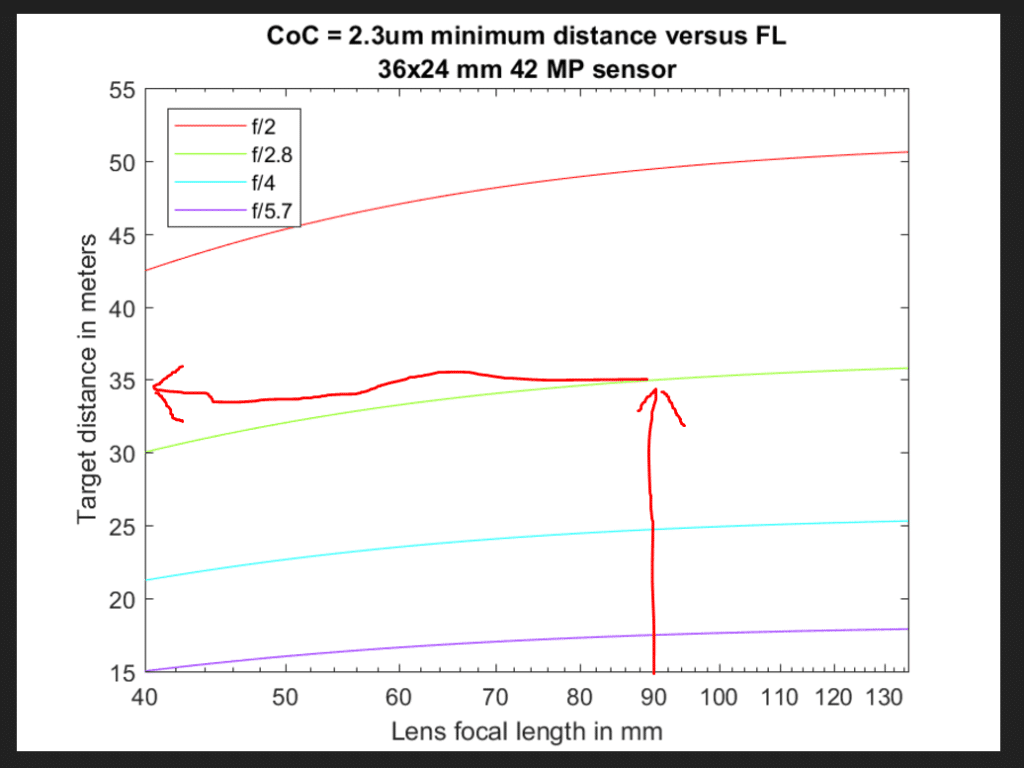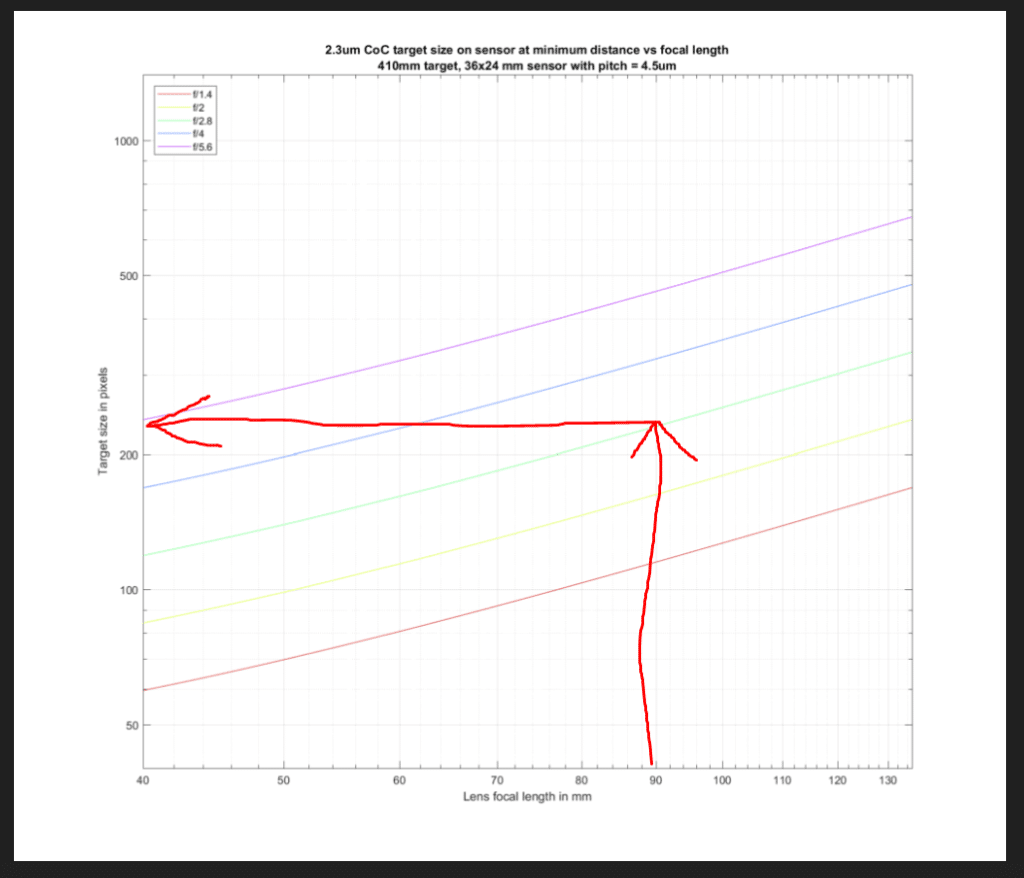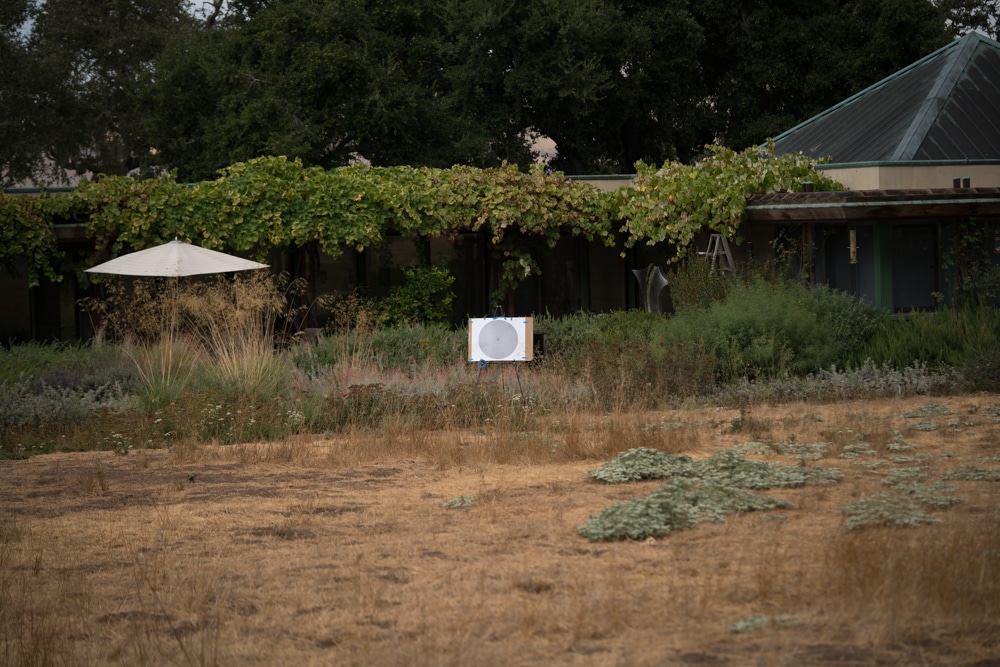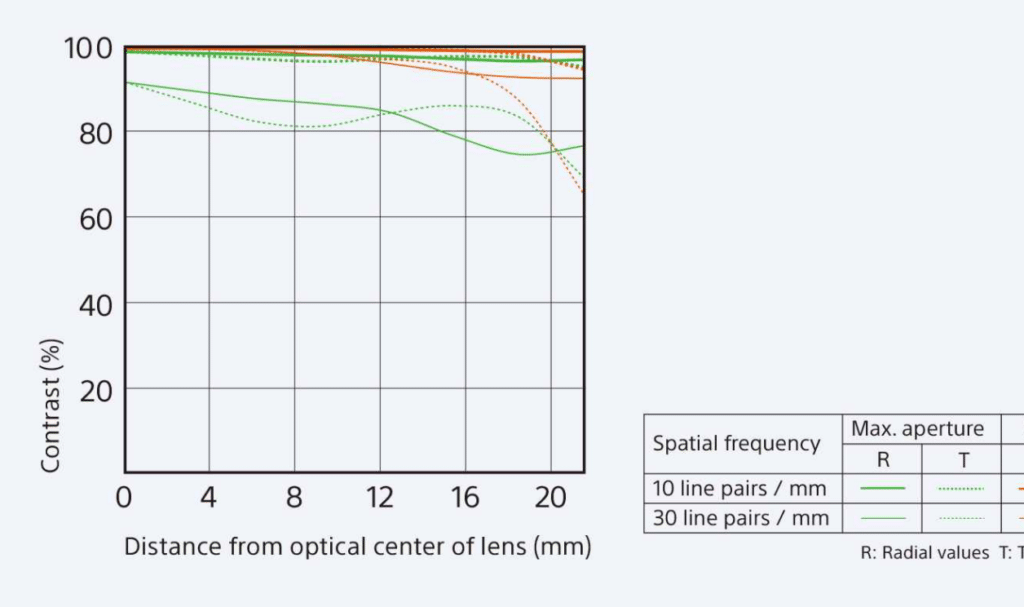On this page, I’ll walk you through a test of a Sony 90 mm f/2.8 macro lens on a Sony a7RII body. The lens turns out to be not-quite-perfectly assembled.
We want to test the lens wide open. We consult the minimum distance chart:
It looks like 35 meters is the right distance.
Checking target size:
A 16-inch target will be about 250 pixels high on the sensor. Plenty big enough. I used a 22.5-inch target, which will be even bigger. I backed up to 37 meters.
There scene, underexposed so that the target background would be well below clipping:
A moderate enlargement of the center:
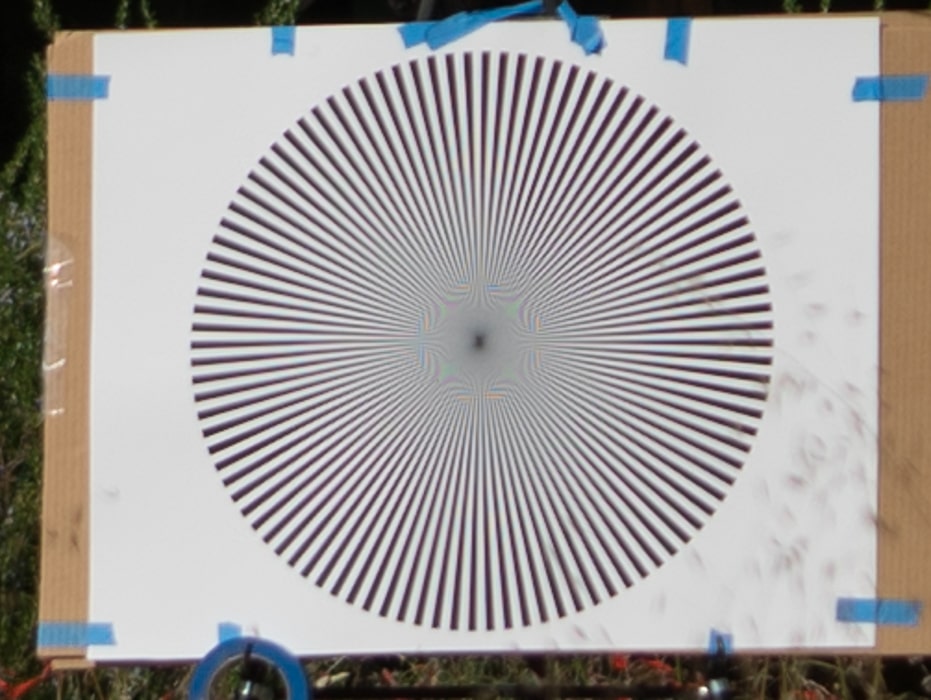
Focus looks good; there is both aliasing and false color.
If we consider the images in opposite pairs we can look for differences that aren’t radially symmetric. If sufficiently bad, these departures from symmetry are indicators of improper assembly.
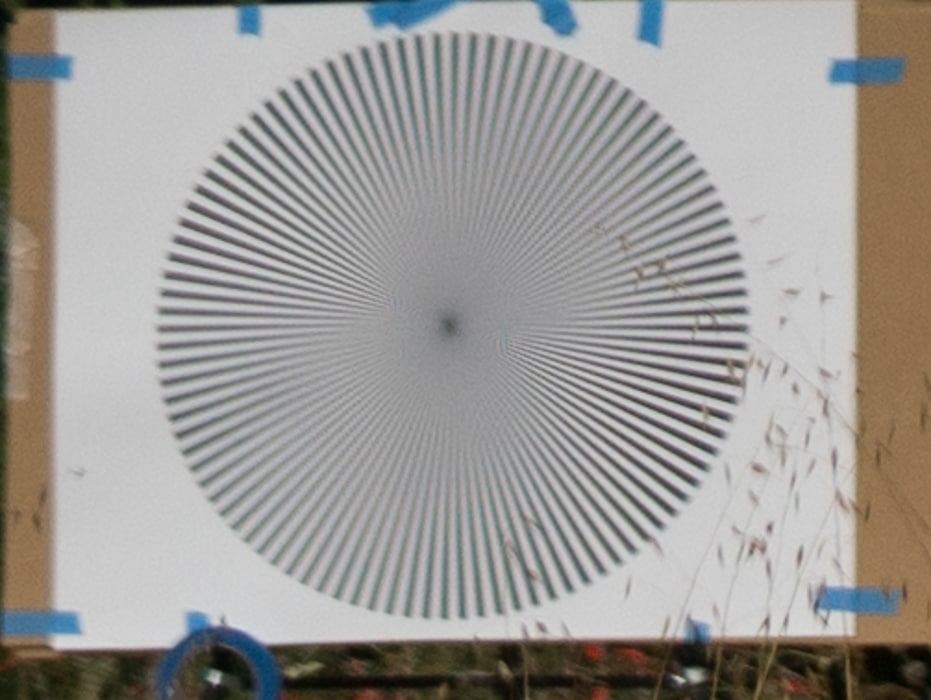
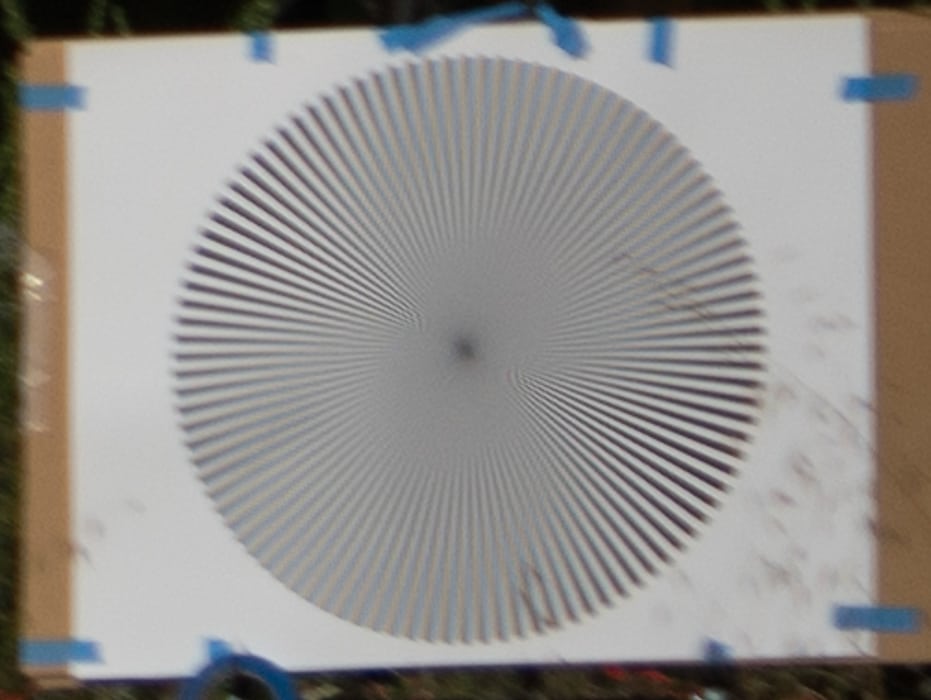
Both of the images show substantially sharper performance for sagittal lines than for tangential ones, but they do that approximately equally. This is a kind of behavior that causes a “smeared” look in the corners.
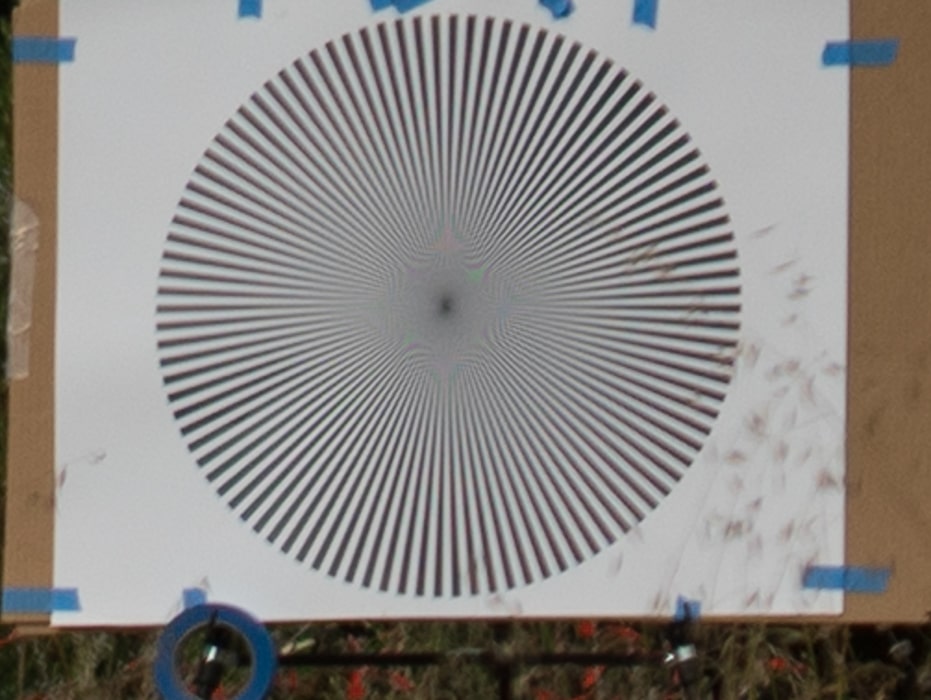
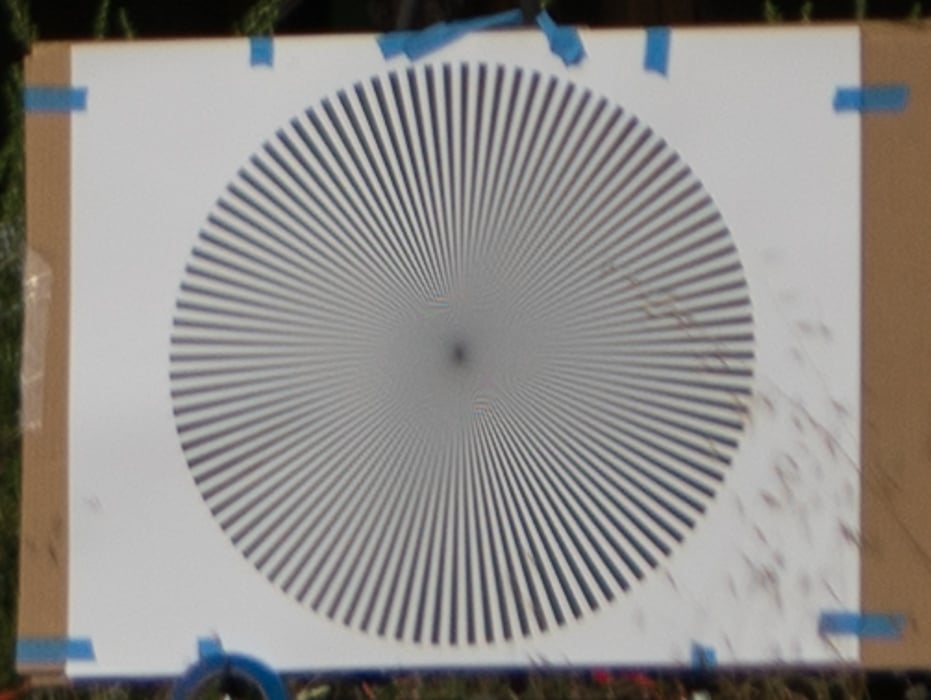
The top is slightly sharper than the bottom.
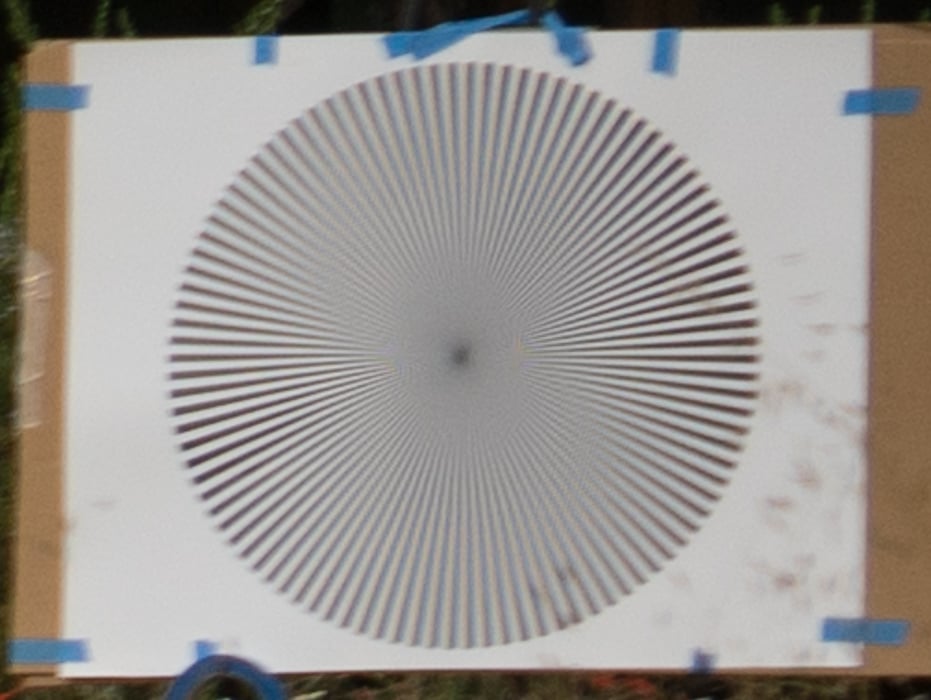
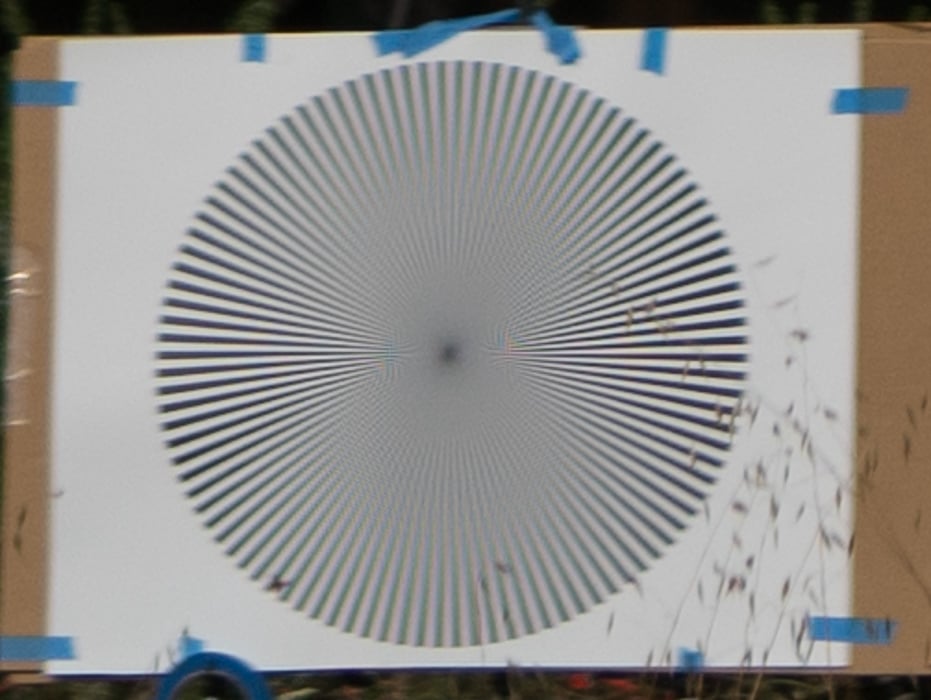
These look about the same, but the direction of the sharpest lines is closer to horizontal than with the opposite pair of corners, which is in between the sagittal and tangential angles.
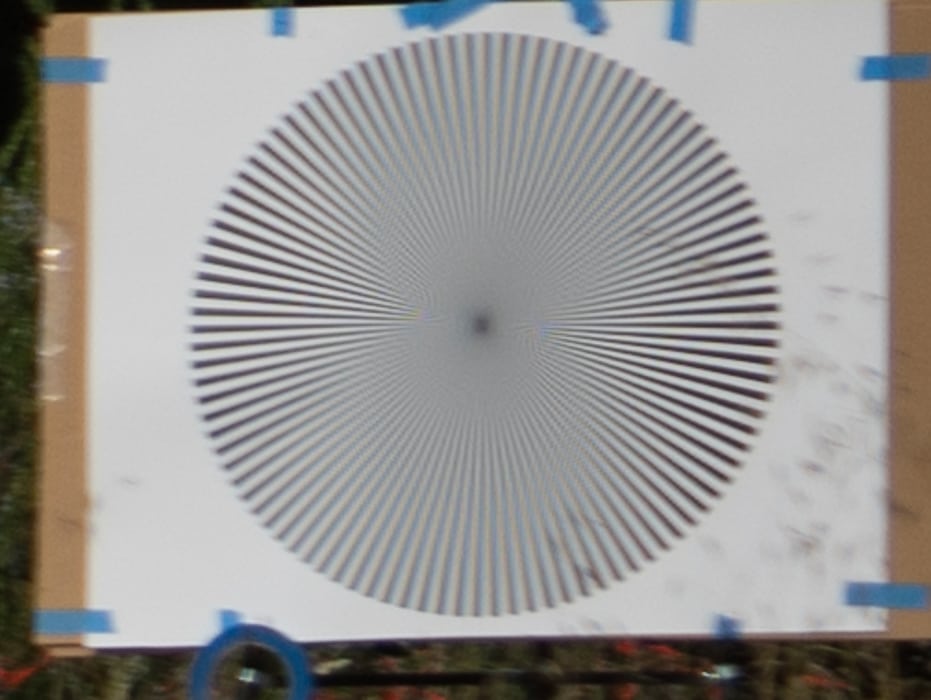
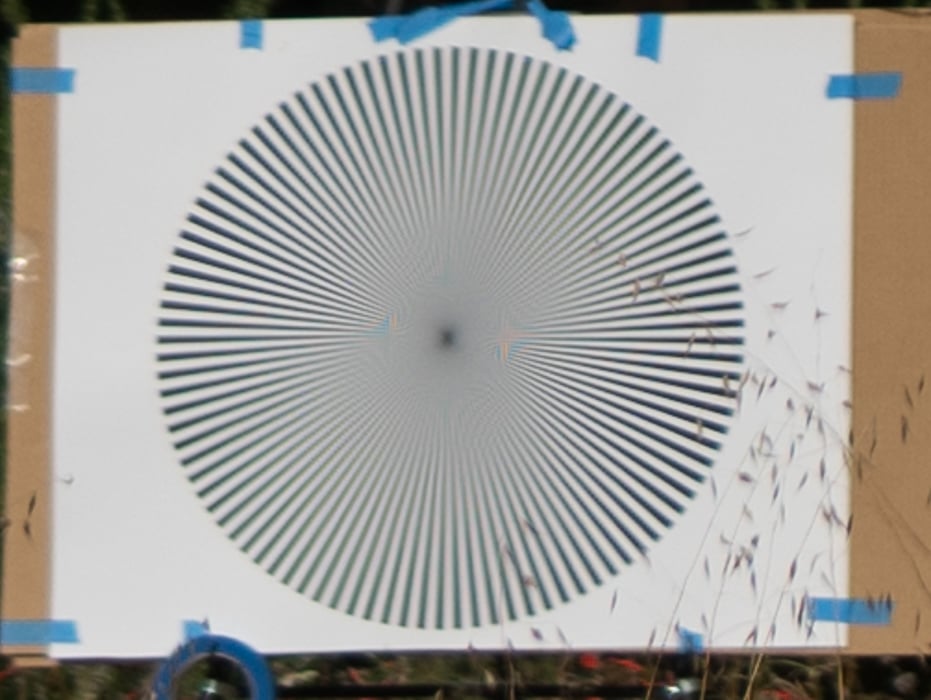
The softness in the vertical lines is more pronounced on the right.
This lens shows some asymmetry in its performance, but not to the extent that would disqualify it from normal photographic use.
In general, the lens shows lower sharpness for tangential features than radial or sagittal ones. This is not reflected in Sony’s MTF curves at f/2.8 but does show up at f/8:
Testing note. In manual focusing mode, the sensitivity of the focus point to the slightest movement of the ring is extreme. This makes achieving critical focus time-consuming and unpleasantly fiddly.
